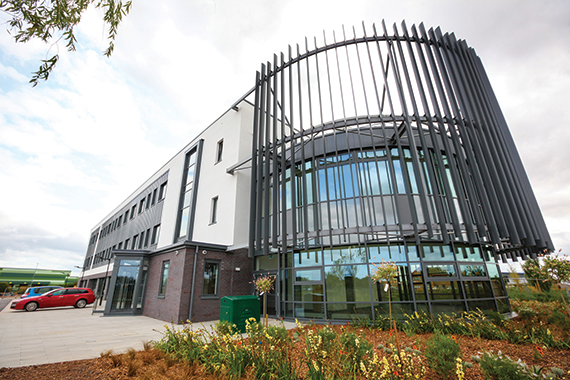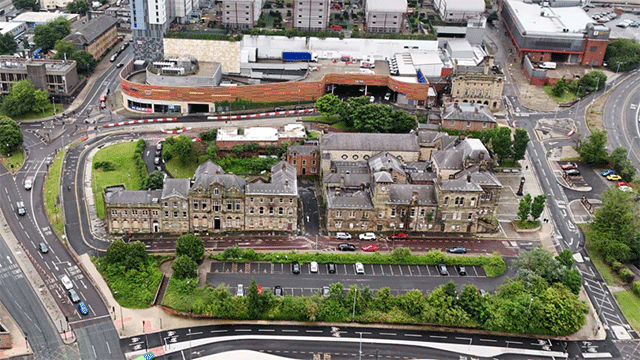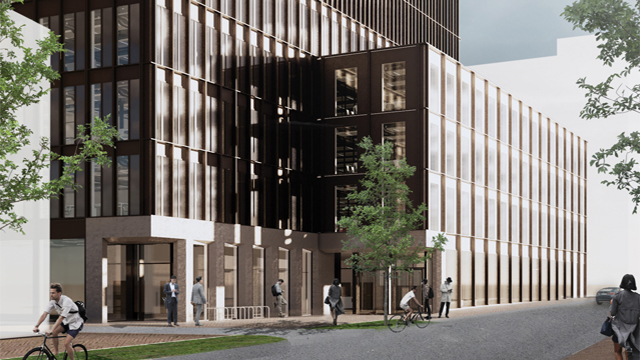The South West spent much of the summer holding its breath while prime minister Theresa May took her time to chew over the details of the Hinkley Point C power station contract, before finally deciding the £18bn nuclear power plant should go ahead.
Welcoming the outcome, Tim Davies, head of the Bristol office of Colliers International, says: “Irrespective of your views on the validity of nuclear power, this has to be seen as a massive boost for the local economy. The supply chain needed cannot be underestimated – it is almost like the creation of a new town.”
What will be Europe’s largest construction project, sitting on a 400-acre coastal site in North Somerset, has some well-publicised stats attached to it: the £50bn of regional business contracts over the next 20 years, the £100m pa contribution to the South West economy, the 25,000-strong workforce over the lifetime of the project. But even Phil Smith, managing director of Business West, also the power behind public-private partnership Nuclear South West, admits it was only when he got up close and personal with a site visit that the scale of it came to life for him. “It is simply eye watering,” he says in his blog.
The region’s property sector – commercial and residential – is expected to be a major beneficiary of the project, led by French energy firm EDF, and agents say the recent go-ahead is already translating into more requirements.
Simon Harvey, industrial partner with Hartnell Taylor Cook, confirms: “Local companies have been gearing themselves up, but no one could push the button until the decision was made. Since then we have seen enquiries picking up.”
In nearby Bridgwater, expected to be a particular focus of attention, one local company typifies current activity. Switchgear manufacturer Elecsis has, for some time, been keen to double its space but, says Andrew Maynard, partner with Alder King, it had to “put the plans on go-slow” while awaiting the Hinkley outcome. Now it has renewed its search for 20,000 sq ft of additional space.
Maynard has also had recent enquiries from a national serviced office provider, a building supplies company and an industrial services company all looking for space.
The benefits are also expected to spread towards Bristol, Weston-super-Mare, Taunton and beyond. Evidence shows people will travel 90 minutes to work on such a project, so that even puts Gloucester, Cardiff, Swindon and Exeter on the radar, say agents.
Occupier demand from high-tech engineering firms, more likely to want office type accommodation, steel fabrication specialists and a wide range of industrial companies is set to rise. Harvey also expects to see increasing requirements from transport companies and spin-off demand from companies that service vehicles. He also says the “colossal” amounts of electrical work at Hinkley will provoke demand for more space, including storage requirements.
Office demand for the South West is also expected to see significant growth, and North Bristol, which offers advantageous M4/M5 corridor connections to the Bridgwater area, is likely to benefit most, according to Hartnell Taylor Cook’s office partner Chris Grazier. Consultant engineers Hoare Lea has taken an 11-year lease at Aztec West – not directly linked to the Hinkley project at present but, says Grazier, “they are clearly seeing opportunities for the future”.
Meanwhile, North Bristol-based construction consultancy Gleeds anticipates a doubling in size of its office there over the next three years – similarly at its Gloucester base – to service a Hinkley contract. Colliers International has been monitoring the north Bristol market and estimates 10% of out-of-town office enquiries over the past three months have been directly linked to Hinkley requirements.
Available space, however, is limited to just a handful of buildings that can offer 10,000 sq ft. The last development opportunity at Aztec West, BMO Real Estate’s 10-acre Hempton Court, which would “support a decent scale of building” is being worked up.
And beyond that, Regional Reit’s £5m speculative refurbishment of 800 Aztec West is out to tender. “They are pushing the button on that now because they can anticipate the future market,” says Grazier.
The knowledge economy and design and IT – thriving South West sectors – can expect a further boost from Hinkley, believes Jo Davis, regional senior director with Bilfinger GVA, and those kind of occupiers are going to be seeking flexible space and collaborative working environments, she says.
The market has already seen the success of innovation hubs – the Engine Shed at Bristol, recently approved for a second stage expansion, and in Weston-super-Mare The Hive. Davis anticipates a proliferation of more high-tech hubs along the M5 corridor.
 Somerset Energy Innovation Centre at Bridgwater’s Woodlands Business Park, (above) is another example. Already home to several Hinkley supply chain companies, a third phase is under consideration, according to Alder King’s Maynard.
Somerset Energy Innovation Centre at Bridgwater’s Woodlands Business Park, (above) is another example. Already home to several Hinkley supply chain companies, a third phase is under consideration, according to Alder King’s Maynard.
The South West in general, though, suffers a lack of new build, but a pipeline which could service Hinkley-related requirements is emerging. Peninsula 23 is an industrial site off junction 23 of the M5, and is likely to see its first deals in 2017. Bridgwater Gateway, off junction 24, has space for offices, industrial and roadside, and there is further land at the mixed-use West Park 26 at junction 26. There is also a brand new 60-acre site at junction 25 of the M5.
While space in the region remains tight, commercial rents could be heading for boom time. According to Colliers International’s latest figures, North Bristol office rentals, traditionally between £14 and £20 per sq ft, show grade-A reaching £21.50.
Colliers’ Davies says limited availability of high-quality industrial space to meet demand in that sector may see prime rents, now £6.50 per sq ft, conceivably breaking £10 per sq ft barrier and, in doing so, breaching record levels.
First of a raft of big projects?
Hinkley Point C and the legacy of benefits it is expected to deliver to the South West could represent a vote of confidence for further infrastructure projects across the UK.
Gareth Wilson, head of environmental planning and energy at Barton Willmore, says similar installations at Sizewell C in Suffolk, Moorside in Cumbria and Bradwell B in Essex are in sight.
“Hinkley is a catalyst for them – a key decision for triggering the energy programme.”
Simon Peacock, director at JLL, sees it paving the way for new power stations planned at Oldbury in Gloucestershire and Anglesey, North Wales, creating a “real chain of developments, a cluster effect.”
Living space
The scale of the Hinkley workforce will inevitably affect all sectors of the South West economy.
Local agents are already seeing more activity in the hotel and leisure sectors on the back of it. But housing might feel the effects most of all.
EDF is providing campus accommodation for 500 workers on-site and a further 850 workers on a former factory site in Bridgwater.
Andy Cockett, senior director and head of the Bristol office of Nathaniel Lichfield, believes Bridgwater, where the housing market has not been as buoyant as other parts of the region, could see widespread positive change.
Savills director James Greenland believes there are some early signs of such improvement in North Somerset. Sites at Minehead have been on the radar of the HCA, with a view to taking an interest to stimulate the market.
He feels Hinkley will help to unlock residential developments that were previously undeliverable. A site in Highbridge, consented for 550 units, has, to date, received little interest but he now expects housebuilders to come forward. “Now the starting gun has fired, things will ramp up pretty quickly.”











